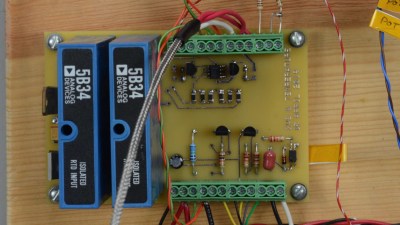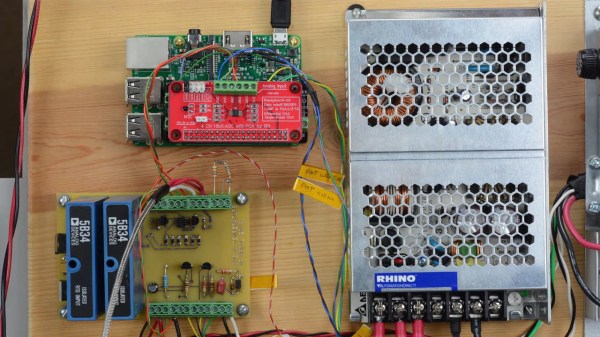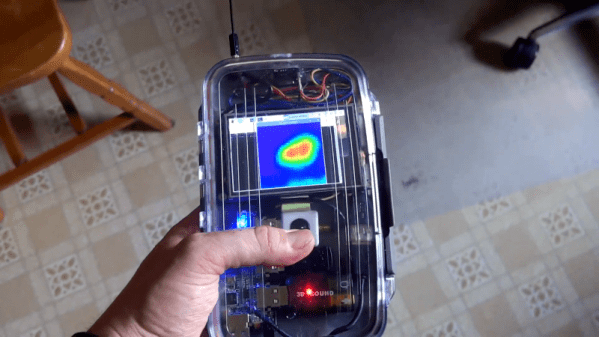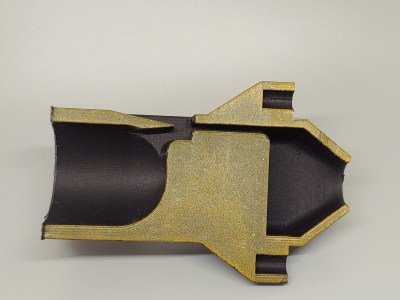It should be no surprise to many that one can use a Raspbery Pi SBC as an industrial controller, but is it any good at that? That was the question which [Dough Reneker] and [William Shaffer] built a test rig to see how a Raspberry Pi performs in head to head tests. They compared a Python-based control loop on a Raspberry Pi 3B against an C0-12DD1E-2-D AutomationDirect CLICK Programmable Logic Controller (PLC) using a simple water heating example.
 A major snag with using the Raspberry Pi as a PLC is the lack of industrial I/O capacity. This requires additional hardware, in this case adding a four-channel ADC board as well as a custom board to condition the signals. The Raspberry Pi looks for 0-3 V inputs where industrial control applications are usually in the -10 to 10 V range and often use a 4-20 mA current loop.
A major snag with using the Raspberry Pi as a PLC is the lack of industrial I/O capacity. This requires additional hardware, in this case adding a four-channel ADC board as well as a custom board to condition the signals. The Raspberry Pi looks for 0-3 V inputs where industrial control applications are usually in the -10 to 10 V range and often use a 4-20 mA current loop.
Using a PLC leverages so-called ladder logic, where each action depends on conditions. With each update scan, the PLC ensures that all input conditions are translated into the appropriate output conditions in real-time. It’s only job is to monitor the process at hand and it does this very well.
 Here the flexibility and generic nature of the Raspberry Pi running Linux was a disadvantage. Unlike the PLC, the lack of a hard real-time OS means you can’t guarantee the Pi will be as responsive to changing inputs.
Here the flexibility and generic nature of the Raspberry Pi running Linux was a disadvantage. Unlike the PLC, the lack of a hard real-time OS means you can’t guarantee the Pi will be as responsive to changing inputs.
The behavior of the two systems showed that while both did the task they were programmed for, the Raspberry Pi was decidedly more erratic. Although one could program around a lot of these issues (presumably using Linux in stripped-down, soft real-time configuration with interrupt-driven native code), the effort needed to make a Raspberry Pi system suitable for an industrial environment shows why single-board computers haven’t seen adoption as replacements for PLCs.
Continue reading “Evaluating Raspberry Pi As A Programmable Logic Controller”

















